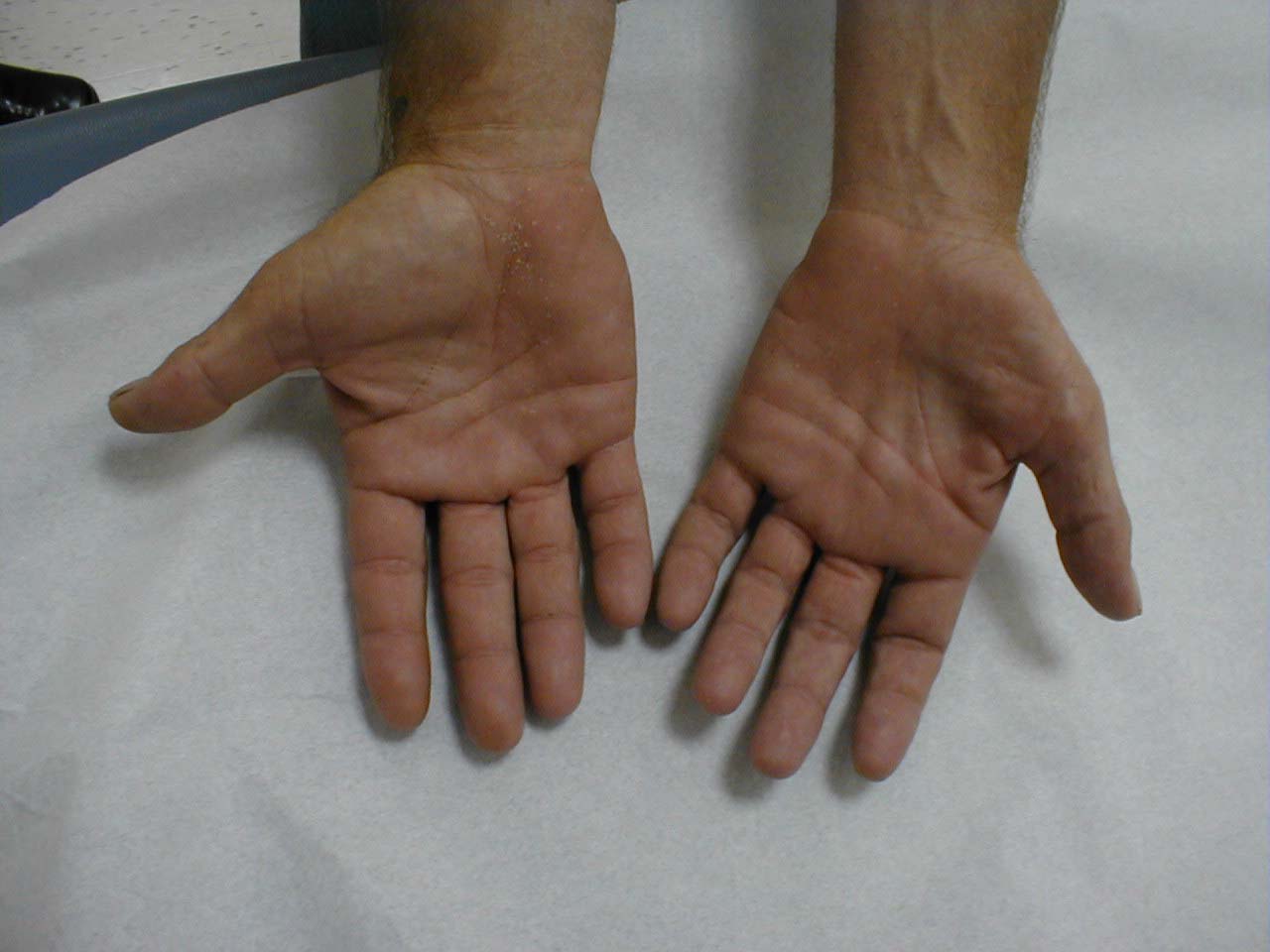Muscle atrophy
| Muscle atrophy | |
 | |
|---|---|
| Muscle atrophy. Image courtesy of Professor Peter Anderson DVM PhD and published with permission © PEIR, University of Alabama at Birmingham, Department of Pathology |
|
WikiDoc Resources for Muscle atrophy |
|
Articles |
|---|
|
Most recent articles on Muscle atrophy Most cited articles on Muscle atrophy |
|
Media |
|
Powerpoint slides on Muscle atrophy |
|
Evidence Based Medicine |
|
Clinical Trials |
|
Ongoing Trials on Muscle atrophy at Clinical Trials.gov Trial results on Muscle atrophy Clinical Trials on Muscle atrophy at Google
|
|
Guidelines / Policies / Govt |
|
US National Guidelines Clearinghouse on Muscle atrophy NICE Guidance on Muscle atrophy
|
|
Books |
|
News |
|
Commentary |
|
Definitions |
|
Patient Resources / Community |
|
Patient resources on Muscle atrophy Discussion groups on Muscle atrophy Patient Handouts on Muscle atrophy Directions to Hospitals Treating Muscle atrophy Risk calculators and risk factors for Muscle atrophy
|
|
Healthcare Provider Resources |
|
Causes & Risk Factors for Muscle atrophy |
|
Continuing Medical Education (CME) |
|
International |
|
|
|
Business |
|
Experimental / Informatics |
Muscle atrophy refers to a decrease in the size of skeletal muscle, which occurs in a variety of settings. Atrophy may or may not be distinct from "sarcopenia", which is the loss of muscle seen in the aged.
When a muscle atrophies, it necessarily becomes weaker, since the ability to exert force is related to mass.
Clinical settings of atrophy
There are many diseases and conditions which cause a decrease in muscle mass, known as atrophy, including: inactivity, as seen when a cast is put on a limb, or upon extended bedrest (which can occur during a prolonged illness); cachexia - which is a "body-wasting" syndrome that is a co-morbidity of cancer and Congestive Heart Failure; Chronic Obstructive Pulmonary Disease; burns, liver failure, etc. Other syndromes or conditions which can induce skeletal muscle atrophy are congestive heart disease, liver disease, and starvation.
Other muscles diseases, distinct from atrophy
During aging, there is a gradual decrease in the ability to maintain skeletal muscle function and mass. This condition is called "sarcopenia". The exact cause of sarcopenia is unknown, but it may be due to a combination of the gradual failure in the "satellite cells" which help to regenerate skeletal muscle fibers, and a decrease in sensitivity to or the availability of critical secreted growth factors which are necessary to maintain muscle mass and satellite cell survival.
In addition to the simple loss of muscle mass (atrophy), or the age-related decrease in muscle function (sarcopenia), there are other diseases which may be caused by structural defects in the muscle (muscular dystrophy), or by inflammatory reactions in the body directed against muscle (the myopathies).
Pathophysiology
Muscle atrophy occurs by a change in the normal balance between protein synthesis and protein degradation. During atrophy, there is a down-regulation of protein synthesis pathways, and an activation of protein breakdown pathways. The particular protein degradation pathway which seems to be responsible for much of the muscle loss seen in a muscle undergoing atrophy is the "ATP-dependent, ubiquitin/proteasome pathway. In this system, particular proteins are targeted for destruction by the ligation of at least four copies of a small peptide called ubiquitin onto a substrate protein. When a substrate is thus "poly-ubiquitinated", it is targeted for destruction by the proteasome. Particular enzymes in the ubiquitin/proteasome pathway allow ubiquitination to be directed to some proteins but not others - specificity is gained by coupling targeted proteins to an "E3 ubiquitin ligase". Each E3 ubiquitin ligase binds to a particular set of substrates, causing their ubiquitination.
Diagnostic Findings
-
Muscle Wasting Left Hand: Atrophic flattening most prominently seen in the thenar and hypothenar muscles, resulting from generalized denervation.
Potential treatment
Muscle atrophy can be opposed by the signaling pathways which induce muscle hypertrophy, or an increase in muscle size. Therefore one way in which exercise induces an increase in muscle mass is to downregulate the pathways which have the opposite effect.
See also
- Muscle weakness
- Muscle dystrophy
External links
- Muscular+atrophy at the US National Library of Medicine Medical Subject Headings (MeSH)
